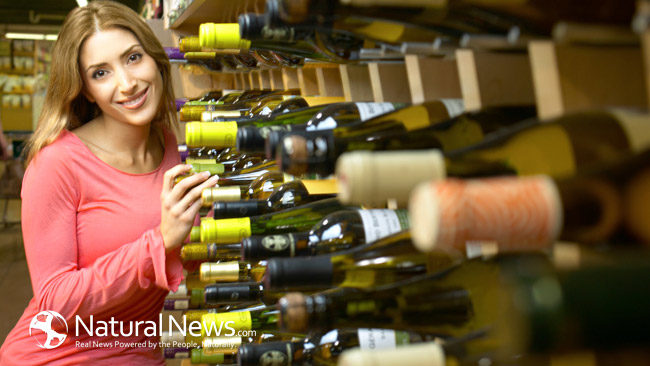Did you know that the FDA doesn’t require nutrition facts for alcoholic beverages?? Does this mean that innocence is bliss when it comes to alcohol and your diet plan?? What you don’t know doesn’t count or doesn’t hurt you?? Well, the waistline seems to respond regardless of the data. Wine has been called the “nectar of the gods” and beer has developed into a brewery on every corner. Alcohol is a pleasurable beverage many people enjoy; which type is a matter of personal preference, availability, and sometimes culture.
A bottle of wine has about 750 calories compared to a six pack of beer that has about 900 calories. This means that if you had a standard glass of wine every night (6oz), that’s 1260 calories added up for the week. Having a standard pint of beer (14oz) each night would be 1500 calories for the week. For these terms, one glass of wine is equivalent to 1.5 bottles of beer (of course this varies). Carbohydrate content varies between types, but a typical glass of wine has between 9 to 19 carbs while a typical pint of beer has about 16 to 22 carbs. Both wine and beer have lighter and darker variations. For both beverages, the lighter the type, the fewer calories. Even though this information might not be displayed on the beverage, we know that each contains sugar and calories from the alcohol and fat.
There are some interesting statistics associated with alcohol consumers. Some research has even pointed towards a faster brain decline in functioning in nondrinkers versus drinkers. Moderate drinkers are 50% less likely to have a stroke and 30% less likely to develop type 2 diabetes.
Wine drinkers have a 34% less mortality rate. Red wine contains tannin and procyanidins which protect against heart disease. One glass also contains 187 mg of potassium and wine also has fiber. This drink also contains flavonoids which help protect against the sun’s UV rays. Wine is acidic which means it can hinder your teeth’s enamel. It has been associated with triggering migraines. Wine can also elevate triglyceride levels which is associated with weight gain and obesity. Excessive amounts can lead to liver damage.
Beer contains silicon which improves bone density to help offset osteoporosis. Beer seems to act more like food in the body because it contains protein, fiber, folate, niacin, and vitamin B. Having too much beer can lead to burping, liver damage, heart burn, and dehydration. Certain craft brews can be very high in calories. Beer had been said to be the world’s most highly consumed alcoholic beverage.
Whichever type you choose, moderation is always important. Drinking your calories in addition to your regular diet needs to be accounted for. These drinks can be a set-back to caloric restriction and hinder motivation to be active. Try to read what labels and information is available and look for lighter versions. Your taste-buds shouldn’t be the total dictator in your decision making. Don’t wait until you have your beer or wine goggles on to decide what’s best for your body.
https://www.ncbi.nlm.nih.gov/pmc/articles/PMC3023893/
https://academic.oup.com/jn/article/131/5/1401/4686863
https://www.cdc.gov/alcohol/fact-sheets/alcohol-use.htm
https://www.ncbi.nlm.nih.gov/pubmed/27118108
https://www.cancer.gov/about-cancer/causes-prevention/risk/alcohol/alcohol-fact-sheet








